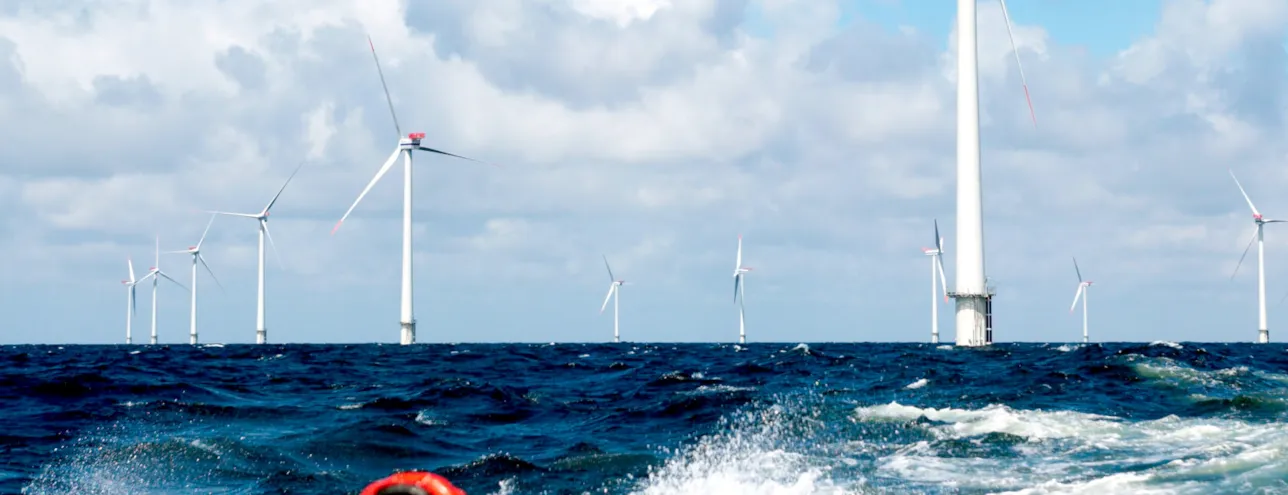Curious? This course is the perfect opportunity for industry professionals to gain an overall understanding of the offshore wind project life cycle.
Why are most US offshore wind projects JVs? How does BOEM define the boundaries of a Lease Area? Are there going to be floating substations off the coast of California? How is micrositing conducted? These are just a handful of the many questions that came up during DNV's latest Interactive Offshore Wind training. Curious? This course is the perfect opportunity for industry professionals to gain an overall understanding of the offshore wind project life cycle. With a team of experts in all aspects of offshore wind projects, DNV provides a comprehensive three-day course that covers all relevant aspects of offshore wind projects, from assessing feasibility to decommissioning. This online training is offered every April and September, enabling the greatest amount of flexibility to fit into a busy schedule.
The course is taught by DNV’s leading experts on each topic. This means that participants receive accurate, up-to-date information on the latest developments in offshore wind. Whether you're already engaged in offshore wind, or interested in transitioning into the industry, the course is tailored to provide you with valuable insights. DNV teaches customers from all over the world eager to learn about the intricacies of offshore wind in the U.S., where the industry is ramping up quickly as the first utility-scale projects along the East Coast are now being permitted and constructed, California recently completed its first lease auction, and the Gulf of Mexico is gearing up for a lease auction later this year.
Recent customer comments praised “the holistic approach of the training course” and noted that the course was "very well organized. The DNV team was excellent,” highlighting the effectiveness of DNV's interactive teaching methods. This course covers all relevant aspects of offshore wind projects across the entire project life cycle, from early feasibility to decommissioning. Participants gain an overview of the processes, technologies, and risk considerations involved in each phase of an offshore wind farm’s life. This is particularly important given the rapid growth in the US offshore wind industry anticipated over the next decade.
Now, what about those questions?
In this course, DNV delivers ANSWERS!
Below is just a small sample of the range of Q&A DNV fielded during last week’s training.
- How does BOEM define the boundaries of a lease area?
BOEM works with other agencies to first identify a Call Area, solicits stakeholder input to narrow that down to Wind Energy Area(s) (WEA) by looking for the acreage with the fewest restrictions or constraints, again calling for feedback before determining the lease areas (LA) boundaries within the WEAs that would likely be most feasible for offshore wind projects. - Can you talk about why most US projects are 50:50 JV's?
Offshore wind projects cost on the order of USD 4 billion. Partnering is pursued in order to leverage a company's own expertise or bring expertise together or separate out pieces of risk for development and operation of these projects. - Are there going to be floating offshore substations in California?
Floating substations will most likely be required for CA due to the water depth, but to date this has not been done. DNV recently initiated a Joint Industry Project (JIP) to promote technology development for floating substations. An alternative is to submerge the substations and locate them on the seabed, but the necessary technology to do that would need to be tested and proven. - How is micrositing conducted? Is it by considering all the risks such as wake effects, water depth, gas pockets, boulder presence etc. and then optimizing the layout based on some kind of a Monte Carlo simulation?
Micrositing takes all environmental, indigenous, archaeological, geological, cultural, industrial, and social factors into account first and blocks out all unsuitable areas even before turbine siting begins. Only after that step are turbines sited within the remaining allowable areas, at which point modeling software considers the wind and metocean conditions and optimizes the turbine layout to minimize cost of energy. Click the link for more info on DNV's windfarm siting software tool WindFarmer. - What level of permitting is required for decommissioning activities?
A preliminary decommissioning plan must be included in the COP submitted to BOEM before the project is permitted. The preliminary plan lays out the plan for having the necessary funds in place before decommissioning commences. Near the end of the project life the owner will be required to file a decommissioning permit application with BSEE (sister agency of BOEM). BSEE must approve the final decommissioning plans. - Would the U.S. consider economic incentives like feed-in tariffs (FITs)?
FITs have been considered for a long time but have not gained sufficient traction in the US. The PTC and ITC tax credits have served to incentivize the renewable energy industry pretty successfully, especially during the periods when the tax credits were locked in for several years in a row. This certainty has historically provided significant comfort to the market.
